How were abductions committed?
The 23 abducted victims identified by AFVKN (in chronological order)

Shoji Terakoshi, Soto Terakoshi and Takeshi Terakoshi :
Disappeared on 1 May 1963 while they were out ishing off the Noto Peninsula (Ishikawa Prefecure). Only their boat was found on the coast. 24 years later in 1987, Terakoshi Soto’s sister received a letter from her brother, explaining that they lived in North Korea.
An Myong-jin, a former North Korean spy, revealed he saw a man resembling Takeshi Terakoshi near a weaponry warehouse at the Kim Jong-il Military University. O Gu-ho, the instructor then told him: «I came across him during a spy mission. I was he one who kidnapped and brought him here! » And (about the person who might be Shoji): «At the scene of the kidnapping, he tried to resist and protect the child (Takeshi, then aged 13). I shot him and he disappeared into the sea,» and also «The three people were out at night a few hundred metres off the Noto Peninsula. Our spy-boat collided with theirs. So that they wouldn’t denounce our illegal entry, we abducted them, leaving their boat behind.»
This testimony thus proves the involvement of North Korea in the kidnapping of Takeshi Terakoshi. North Korean authorities, however, forced the latter to declare that their boats had in fact rescued him at the time.
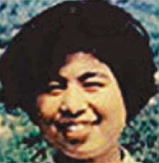
Kumiko Kato :
On 8 August 1970, Kumiko Kato disappeared after being separated from her younger sister at a tram stop in Yahata Higashi (city of Kyushu). An office clerk at the time, Kumiko was on her way to work at Kokura. Everything seemed normal, and she had asked her family to prepare her kimono since she was going to see her knitting teacher at the weekend.
An Myong-jin, former North Korean spy, said he saw a woman who resembled her strongly: «There is little doubt, that’s her. She was with Megumi Yokota at the agent training centre in the Kim Jong-il Military University. »
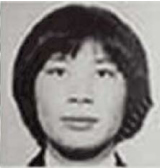
Noriko Furukawa :
«I’m at Chiba Station.» This is the last anyone heard from Noriko Furukawa after she made a telephone phone call on the morning of July 7, 1973, the day of her disappearance. An Myong-jin said he saw a woman resembling her at Hospital 915. In the book he published in 1998, in addition to evidence about Megumi Yokota and Shuichi Ishikawa, his story detailed a Japanese woman who was in Hospital 915. That woman was Noriko Furukawa.
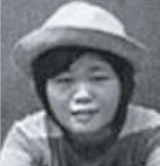
Kimiko Fukutome :
Kimiko Fukutome, from Kochi Prefecture, moved to the capital after completing her studies at senior high school. While continuing her studies at university, she worked in a security company. But Kimiko but also became the wife of Takeshi Okamoto, one of the main instigators of the hijacking of Flight JAL 351 31 March 1970 (also called «Hostages at Yodogo») and a member of the «Japanese Red Army Faction.» Japanese women of this terrorist commando all went to North Korea, of their own volition, to study the doctrines of Kim Ilsung. All except one, Kimiko Fukutome. This suggests that she was abducted and then forced to marry Takeshi Okamoto.
Kim Il Sung ordered the red terrorists to build the «Village of the Japanese revolution», in North Korea, but it was Kim Jong-il who gave instructions for the kidnappings. The group’s leader, Takamaro Tamiya, allegedly participated in the kidnapping of about 20 people. Among them, only Toru Ishioka, Kaoru Matsuki and Keiko Arimoto have been identified.
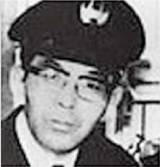
Yutaka Kume :
Yutaka Kume was a security guard at the town hall of Mitaka (Tokyo). He was kidnapped by North Korean agents on the coast of Ushitsu in the Noto Peninsula. A North Korean named Lee, then stopped for illegal residency papers, admitted to having taken Yutaka Kume to an inn near the coast of Ushitsu, and handing him over to North Korean agents. According to Lee’s testimony, a spy ordered him «to abduct an unmarried Japanese man aged 52-53, after having seen documents to assertain their civil status.» Although the police had discovered cryptograms in Lee’s apartment in Tokyo which constitute sufficient evidence to imprison him, he couldn’t be taken to court because nobody has been able to disprove the hypothesis that Yutaka Kume may have left voluntarily.
If the police and the government had given this case more priority, the abduction of Megumi Yokota two months later, and the others that followed, could almost certainly have been avoided.
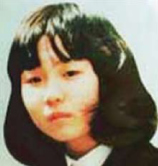
Megumi Yokota :
November 15, 1977 in Niigata, Megumi Yokota, then aged 13, was kidnapped on her way home from school. It would take almost 20 years to finally have news of her. In 1996, the October issue of «Gendai Korea», a news magazine specialising in the Korean peninsula, published an anonymous testimony of a North Korean spy. It states that a 13 year old girl was abducted on the Japanese coast and taken to North Korea, and that she had been kidnapped on her way home from school after a badminton lesson.
This information concurs fully with the circumstances of Megumi’s disappearance. In January 1997, Shingo Nishimura, a member of the House of Representatives, questioned the government and the February Budget Committee on this matter. Ryutaro Hashimoto, then Prime Minister, officially replied that an investigation was underway. In May of the same year at the Accounts Committee of the House of Councillors, the Government recognised the abduction of Megumi Yokota by North Korea.
Documents proving the death of Megumi, and the bones given by the North Korean authorities in Japan have all proven false.
Some elements suggest that if North Korea insists on retaining Megumi Yokota, it is because she knows confidential information about Kim Jong-il’s family.
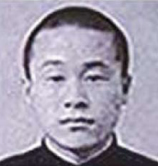
Minoru Tanaka :
Minoru Tanaka was employed at «Lai dai», a Chinese restaurant near Ogi station (Kobe). In 1997, in the January issue of the magazine «Bungei Shunju», Zhang Young-eun, a North Korean resident in Japan confessed that he belonged to the network «Nakdong,» a secret North Korean organisation. According to him, two other members of the organisation took Minoru Tanaka to Narita Airport on 6 June 1978. First passing through Vienna and Moscow, they arrived in Pyongyang. Zhang Young-eun has proven to be the manager of the Chinese restaurant where Minoru Tanaka worked. In April 2005, the government recognised his abduction by North Korea.
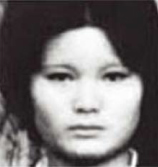
Yaeko Taguchi :
In June 1978, Yaeko Taguchi was abducted while she was leaving her 2 year old daughter and 1 year old son at a child-care centre in Takadanobaba (Tokyo). In 1988, Hyon-hui Kim, one of those responsible for the bomb attack on a Korean Airlines plane in 1987, gave a press conference in which she claims to have been trained to fit in with Japanese society by a woman named Un-hae Lee; that was the Korean name given to Yaeko Taguchi. In 1991, Saitama Prefecture Police confirmed that Un-hae Lee was indeed Yaeko Taguchi, born in the same prefecture. On May 20 in Beijing, 5 days after the announcement, Japan asked North Korea to conduct an inquiry about Un-hae Lee during the third round of talks for the normalization of diplomatic relations between the two countries. North Korea reacted violently and left the talks. In 2002, when Yukiko Hasuike (born Okudo) returned to Japan, she said that Yaeko had taught Japanese to an agent named Ok-hoa Kim in North Korea. It turns out that Ok-hoa Kim was the code name for Hyon-hui Kim when she was in the centre for espionage. So the two accounts concur and confirm that Un-hae Lee and Yaeko Taguchi were one and the same person. North Korea still denies any involvement in the bombing of KAL, just as it denies that Hyon-hui Kim was working as a spy for them. For the North Korean authorities, sending Yaeko Taguchi back to Japan would mean accepting their responsibility for the attack. This they are not ready to do.
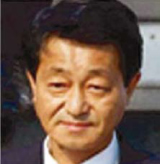
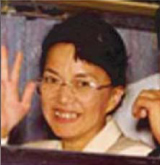
Yasushi Chimura and Fukie Hamamoto :
On 7 July 1978, after having dinner in a restaurant near the coast of Obama (Fukui Prefecture), Yasushi Hamamoto and Fukie Chimura were both kidnapped. Yasushi was an apprentice carpenter at that time. The truck he was driving was found with the keys on the steering wheel at a look-out overlooking the coast. 9 days earlier, the couple had just exchanged their engagement gifts. There was no reason for them to vanish that way. In addition, Yasushi’s father was told by coastguards that a suspicious boat had been spotted off the coast, not far from where they disappeared. October 15, 2002 Yasushi and Fukie returned to Japan, followed in 2004 by their daughter and two sons. In the second half of the year 1978, three couples were kidnapped and one managed to escape. Objects left by the kidnappers had been manufactured in North Korea.
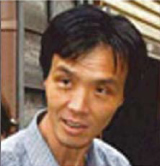
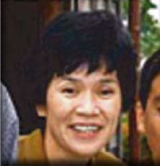
Kaoru Hasuike and Yukiko Okudo :
On 31 July 1978, Kaoru and Yukiko Hasuike Okudo were abducted after having met up at the Kashiwazaki library located 250m from the coast. Kaoru was a student at Chuo University in Tokyo and Yukiko was a cosmetics consultant. That fateful day, Kaoru had just finished a report to hand in after the summer holidays and Yukiko told her employer that she was going out for a coffee before returning to work. The fact that they both disappeared voluntarily thus does not seem possible. 3 years after their abduction, Kaoru and Yukiko abandoned the idea of being rescued by the Japanese government and resigned themselves to living in North Korea forever. But while working on a translation, they came across a newspaper article about an interview with their families in Niigata on the abduction issue. They learned that a movement to liberate the victims of kidnappings was active in Japan. From then on the hope of returning to their homeland never left them. On October 15, 2002, their dream came true. In 2004 their two children were reunited with them.
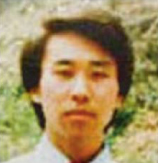
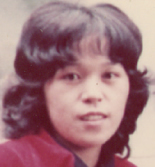
Shuichi Ichikawa and Rumiko Masumoto :
August 12, 1978, Shuichi Ichikawa and Rumiko Matsumoto were kidnapped at the seafront in Fukiage (Kagoshima Prefecture). At the time, Shuichi worked for public telecommunications (now NTT) in Kagoshima, and Rumiko was a clerk. Their car, found at the scene of the abduction, was locked. Rumiko’s bag and camera were on the passenger seat. In this bag, were sunglasses, a wallet and makeup. No sign of a struggle was found in the car. The film from the camera contained photos of Shuichi and Rumiko taken the day they disappeared. North Korea presented their death certificates, but it turned out that the documents were forged.
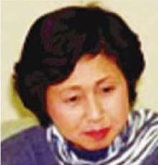
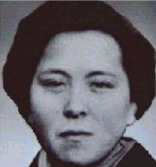
Hitomi and Miyoshi Soga :
August 12, 1978, Miyoshi Soga and her daughter Hitomi were abducted in Sadogashima (Niigata Prefecture) while returning from shopping. The kidnapping took place the same day as that of Shuichi Ichikawa and Rumiko Matsumoto, which confirms that North Korean agents had intended to remove several people at the same time and that their operations were aimed across the country, on the coast and inland. Three men assaulted the mother and daughter. They locked them up in big bags and loaded them aboard a boat which went out to sea. They then put them in a bigger boat anchored off the coast, and left immediately for North Korea. In the boat, Hitomi thought she heared a woman talking in Japanese, probably her mother. North Korea has denied that Miyoshi Soga, however, was on their territory. «Your mother is in Japan! » is how the North Korean authorities answered Hitomi who inquired about the fate of her mother. The truth is that Miyoshi hasn’t been since that day. On the other hand, no evidence of the kidnapping was found, and before North Korea finally admits it, nobody could say if they had actually been abducted under these circumstances. Such cases without evidence are, unfortunately, far from isolated. In North Korea, Hitomi lived for a while with Megumi Yokota. On 15 October 2002, she finally returned to Japan, and in 2004, her husband, Charles Jenkins, and their two children joined her. Jenkins is a deserter from the U.S. Army. He was living with three other Americans who, like him, had fled the army. On her return, Hitomi Soga said that the wives of the American ex-servicemen were all abductees. North Korea had expanded its scope to 12 countries. Apart from Hitomi Soga, there was Shiham Shraiteh (Lebanese), Anocha Panchoi (Thai), and Doina Bumbea (Romanian). All lived in the same apartment.
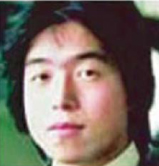
Toru Ishioka :
Toru Ishioka studied at the Faculty of Agriculture and Veterinary Medicine (later the Faculty of Bioresources) of Nihon University. Determined, however, to be a baker and cheesemaker, he decided to go on a trip to Europe. In May 1980, he suddenly stopped communicating. It was not until eight years later in 1988, that his parents, living in Hokkaido, received a letter from him with a Polish postmark. Toru wrote that he was living in Pyongyang with Keiko Arimoto and Kaoru Matsuki. He had discreetly handed the letter to a Polish man he’d met in Pyongyang whilst he was shopping and had asked him to post the letter in his country. Photos that Toru Ishioka took in Barcelona, just before he disappeared, show him in the company of Sakiko Wakabayashi and Yoriko Mori, two female members of the group responsible for the hijacking of Yodogo JAL flight 351. The role of the women, encouraged by North Korean secret services, was to approach Japanese people and then take them to North Korea. Toru Ishioka married Keiko Arimoto in North Korea. They have a daughter, but the North Korean authorities claimed, backed by documents, that she died. These documents proved false.
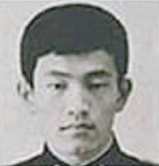
Kaoru Matsuki :
Kaoru Matsuki studied Spanish at the Faculty of Foreign Languages of the University of Kyoto before travelling to Spain to pursue his Masters. He disappeared in Madrid in May 1980 after being approached by Sakiko Wakabayashi and Yoriko Mori, two female members of the group Yodogo. Two other Japanese girls who stayed in Madrid in the company of Toru, Kaoru, Sakiko and Yoriko said in their testimony: «These girls wanted us to go together to Vienna but we refused.» On two occasions, North Korea has provided bones, claiming that they belonged to Kaoru Matsuki, but analysis has proved negative both times. It was someone else. His death certificate was also produced, but the document was a forgery.
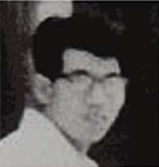
Tadaaki Hara :
Tadaaki Hara was kidnapped by Sin Kwang-su, a North Korean spy in June 1980 on the banks of Aoshima (Miyazaki Prefecture). According to an investigation document from the National Security of South Korea dated 29 June 1985, the kidnapper had received orders from Kim Jong-il himself to bring a Japanese man back to North Korea and usurp his identity to perfection in order to perform espionage missions in Japan and South Korea. After infiltrating Japan, Sin Kwang-su was under the orders of Lee Sam-jun. The latter was president of the North Korean Chamber of Commerce in Osaka and owner of a Chinese restaurant where Tadaaki Hara worked as a cook. Sin Kwang-sun managed to lure Tadaaki, kidnapped him in Aoshima then took him to North Korea. He returned to Japan again, but posing as Tadaaki Hara this time, and even managed to obtain a passport using this identity. In 1985, he was placed under arrest when he tried to enter South Korea with this passport. But on 31 December 1999, South Korean President Kim Dae-jung amnestied him and he was released. Sin Kwang-su went back to North Korea the following year. Apart from abducting Tadaaki Hara, he admitted no other crimes alleged against him. This earned him the title of «National Hero» by North Korea. The North Korean authorities have produced Tadaaki Hara’s death certificate, but the document was a forgery.
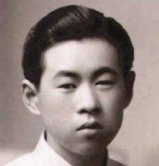
Kenzo Kosumi :
Kenzo Kosumi : Many elements suggest that Kenzo Kosumi was kidnapped in 1980.In 1985, a major North Korean spy named Park who had infiltrated Japan by posing as Kenzo Kosumi, was spotted by the police who then launched an international arrest warrant against him. By impersonating Kosumi, Park had officially obtained his license and his Japanese passport. He lived with a Japanese woman under this false identity and continued to engage in espionage activities. Nobody knows for sure when Kenzo Kosumi was forcibly taken to North Korea, but in April 1980, his family register was transferred from Hakodate to Tokyo. Under the name of Kosumi, Park had created a company and travelled abroad, notably to South Korea. In 2006, Park’s real identity was discovered: he was none other than Sunchol Choi, who in July 1978, had abducted Kaoru and Yukiko Hasuike Okudo.
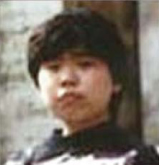
Keiko Arimoto:
Keiko Arimoto had just finished her university studies in London. On the day she was supposed to return to Japan, she sent the following telegram to her family: «I’ve found a job. I’m postponing my return. Keiko.» Later her parents received a letter from Copenhagen. This was to be the last news of their daughter. The letter that Toru Ishioka wrote and had sent from Poland confirmed that Keiko was with him in North Korea. The photo attached to this letter shows Keiko and Toru with a baby. Megumi Yao, the ex-wife of Yasuhiro Shibata, a leader in the hijacking of Japan Airlines 351, is the person responsible for abducting Keiko Arimoto. In April 2002, she recognised her crime before the Supreme Court of Japan. The North Korean authorities have produced Keiko Arimoto’s death certificate. It turned out that the document was a forgery.
Of the 23 victims of abduction identified by NARKN, the government has confirmed 17 (the Japanese authorities being unable to confirm an abduction on the basis of evidence).
An Myong-jin, the former North Korean spy, has witnessed the abduction of 15 victims, several of whose names could not be identified. He also added that the Kim Jong-il Military and Political University had 30 Japanese instructors. Those who had been kidnapped and were not intended to become instructors were used for other tasks. Finally, according to him, the group involved in the hijacking of the the JAL plane abducted 20 people. There are still unexplained cases in which evidence is lacking, as is the case for Miyoshi and Hitomi Soga. Victims of abduction by North Korea, therefore, are not limited to those that the Japanese government has been able to identify. They are much more numerous.